#elitarotstrickingly.com
Above all things, know thyself!
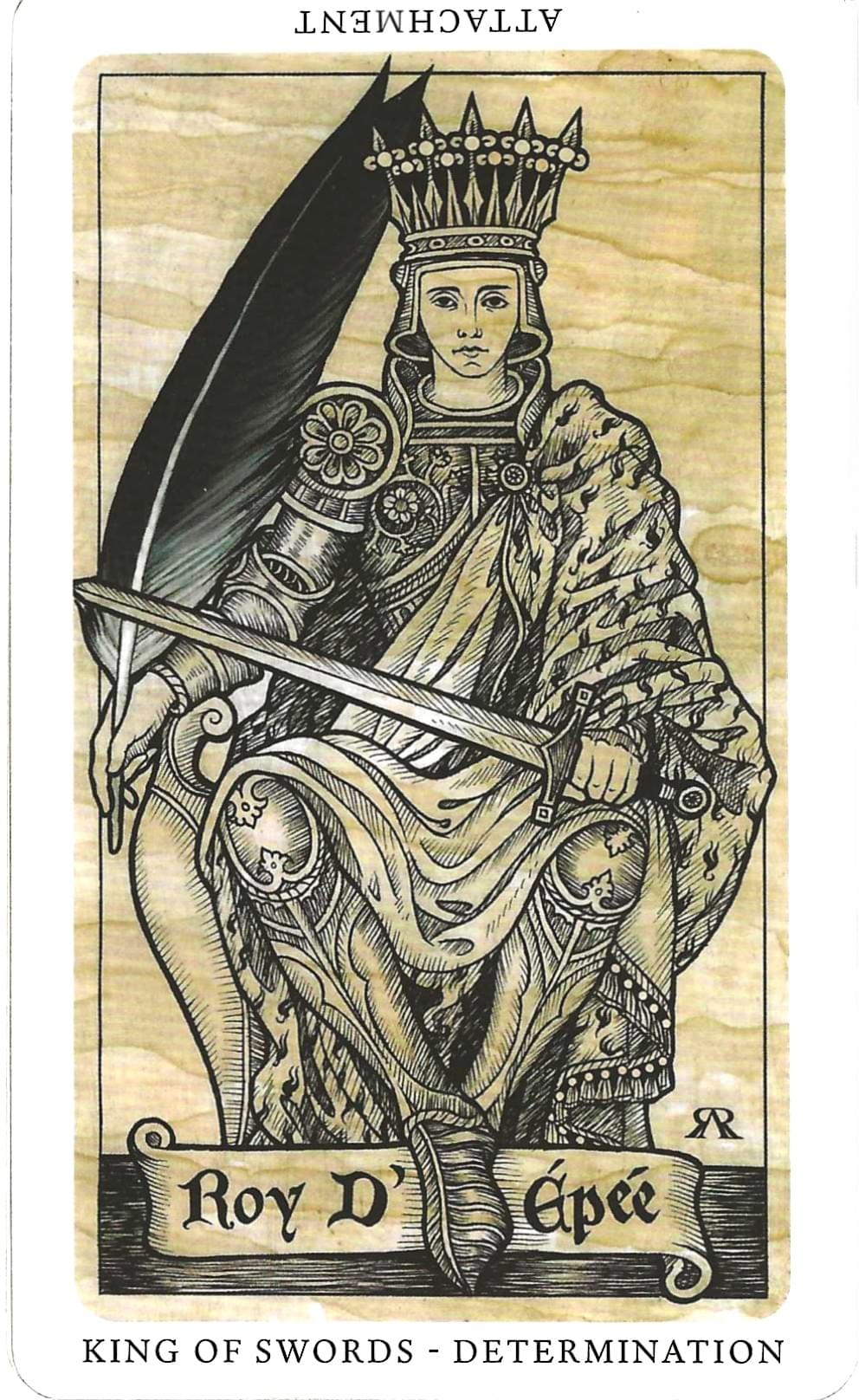
Medieval Feathers Tarot- King of Swords
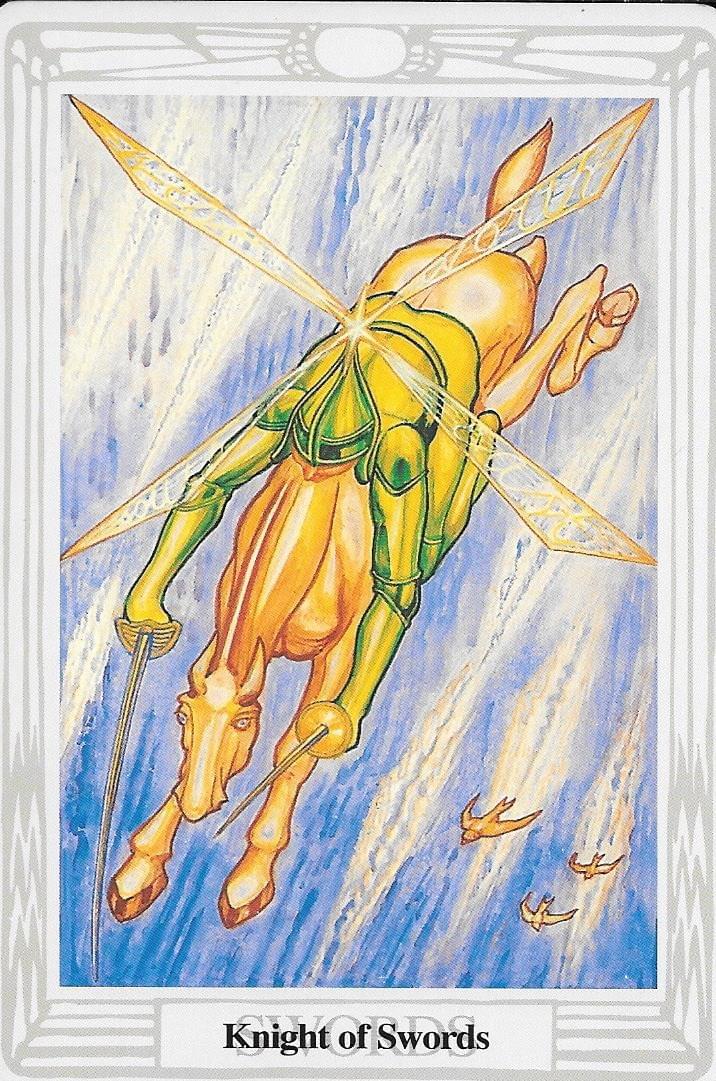
The Knight of Swords: Chokmah’s Will-to-Force in the Airy World
In the Thoth system, Crowley’s Knight of Swords is not a mere monarch but a solar projectile — the masculine current of Yod expressed through the Air element. Where traditional Kings represent settled authority, Crowley saw such passivity as antithetical to the living dynamism of Chokmah, the second Sephirah.
Chokmah is Abba, the archetypal Father, the Logos in motion, the primal impulse before form. It is Wisdom not as contemplative knowing but as the streaming of divine energy — “Will-to-Force.” In this light, the Thoth Knight rides the storm winds of Yetzirah like an idea in motion. His fiery vigor agitates the Air; it does not merely dwell within it. Hence “the fiery part of Air” signifies the active, intellectual tempest that divides and defines — the mind as cutting flame.
The Fourfold Court and YHVH
Crowley’s decision aligns perfectly with the formula of the Tetragrammaton (יהוה):
| Letter | Title | Elemental Aspect | Function |
|---|---|---|---|
| Yod (י) | Knight/King | Fire | The seed, Will-to-Force |
| Heh (ה) | Queen | Water | The womb, Will-to-Form |
| Vav (ו) | Prince | Air | The equilibrating Son |
| Heh-final (ה) | Princess | Earth | The crystallized Daughter |
Thus, the Thoth Knight represents Yod — the primordial spark that ignites manifestation. He enflames the Queen, whose receptive matrix receives his current, and from their union the Prince is born — the harmonized consciousness that mediates to the Princess (Earth), who in turn awakens the next cycle.
In this way, the Knight is the first motion of divine causality, not a stationary ruler but the electric surge that begets the world.
Hermetic Reflection
When one meditates on the Thoth Knight of Swords, imagine the focused lance of intellect propelled by lightning — pure directed thought, the Logos thrusting through confusion. It is not “authority” but activation; not a crown that rules, but a flame that initiates.

As such, Crowley’s redesign of the Court Cards restores the current of the Tree itself: from Kether’s spark into Chokmah’s outpouring and onward to Binah’s formation. The Knights are not figures of static dominion, but of perpetual emanation — Yod riding into creation.

Thoth-Knight of swords
The Thoth Tarot – Knight of Swords: The Fiery Part of Air
The Thoth Knight of Swords is the fiery part of Air, ruling from 21° Taurus to 20° Gemini, and therefore uniting the fixed steadiness of the Bull with the mercurial quickness of the Twins. He is the charged intellect in motion—an inspired idea given wings and teeth. His brilliance can be blinding, for this is not the calm reflection of thought but the storm wind of mind, the forceful rush of intellect that divides, defines, and disperses.
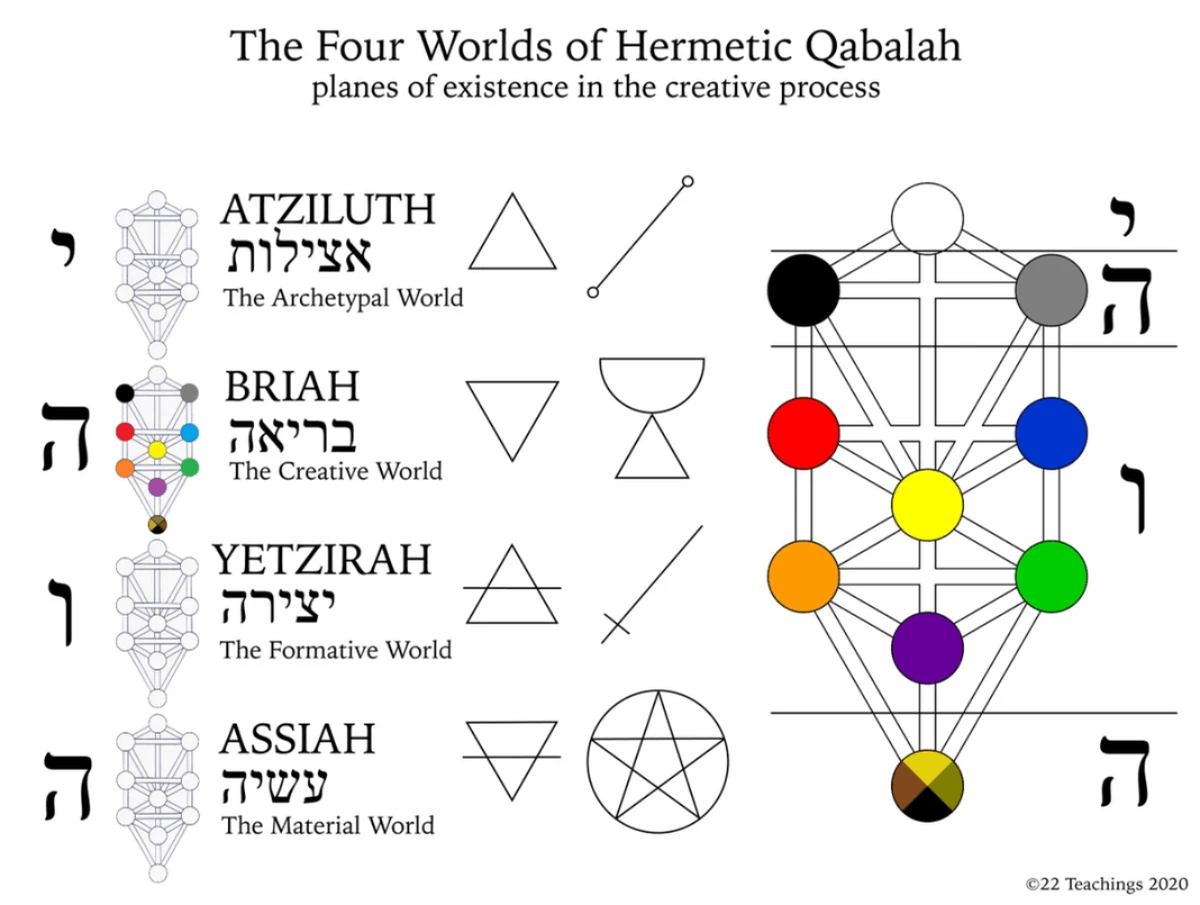
Within the Western Hermetic Qabalah, he represents Yod of Vav, or the seed of motion within the formative world. As the fiery aspect of Air, the Knight embodies Chokmah’s Will-to-Force projected into Yetzirah, the Astral World of Formative Mind. Hence he is not merely a thinker, but the architectonic spark that ignites the world of images and patterns. Through him, ideas are no longer abstract—they take on velocity and direction, carving the architecture of the invisible realms.
This card personifies the activating intelligence behind the Astral World, the Sword of Mind that shapes dreams into structures. He governs the subtle arts of persuasion, invention, and strategy—those refined forms of mental combat where intellect becomes both shield and weapon. Because Air corresponds to the Self-Conscious, the Knight’s influence operates through analysis, argument, and the clever manipulation of symbol. He is the part of us that delights in precision, clarity, and motion—the craftsman of cognition, the mental artisan who rides the storm of ideas.
Yet his fire must be balanced by understanding; without Binah’s cool reflection, the Knight burns out in his own turbulence. When uncontrolled, his intellect becomes a cutting wind that divides without purpose. But when aligned to the higher Will, he becomes the Lightning-Mind of the Magus, the focused current through which the Logos speaks creation into being.

The degrees spanning from 21 degrees Taurus to 20 degrees Gemini encompass a significant portion of the zodiacal spectrum, encompassing the latter part of Taurus and the early part of Gemini. Here are some characteristics associated with this span:
Taurus Traits (April 20 - May 20):
- Stability: Taurus is an earth sign, associated with grounding energy, stability, and reliability. Those born under this sign or influenced by it may possess a strong sense of security and a practical approach to life.
- Determination: Taurus individuals are known for their determination and persistence in pursuing their goals. They are often steady and unwavering in their efforts, refusing to give up easily.
- Sensuality: Taurus is ruled by Venus, the planet of love and beauty, making individuals influenced by this sign often sensual and appreciative of life's pleasures. They have a keen appreciation for art, music, food, and other indulgences.
- Materialism: Taurus is associated with material possessions and wealth. People with strong Taurus influences may prioritize financial security and enjoy the comforts that money can provide.
Gemini Traits (May 21 - June 20):
- Versatility: Gemini is an air sign, characterized by adaptability, curiosity, and versatility. Individuals influenced by Gemini energy tend to be quick-witted, intellectually curious, and open to new experiences.
- Communication: Gemini is ruled by Mercury, the planet of communication, which imbues those under its influence with strong communication skills. They are often excellent conversationalists, adept at expressing themselves verbally and in writing.
- Sociability: Gemini individuals are typically outgoing and sociable, enjoying interactions with others and forming connections easily. They thrive in social settings and may have a wide circle of friends and acquaintances.
- Restlessness: Gemini's dual nature can sometimes manifest as restlessness or a tendency to become easily bored. Those with prominent Gemini placements may crave variety and stimulation, often seeking out new experiences and adventures.
Individuals born with significant placements or influences in this span of the zodiac may exhibit a blend of traits from both Taurus and Gemini, incorporating qualities such as stability, determination, communication skills, and adaptability into their personalities and life experiences.

Symbolism and Archetypal Personality
The Thoth Knight of Swords is shown mounted upon a fierce charger — a symbol of dynamic Taurus energy in motion. The bull’s grounded strength, yoked to the airy velocity of Gemini, produces a storm of intellectual force. His twin swords, extended and gleaming, represent the dual-edged power of Mind—the ability to sever illusion and discern truth, yet also the potential to wound through over-analysis or untempered logic. Here we see the very image of the Logos as a blade: consciousness cleaving its way through the chaos of unformed thought.
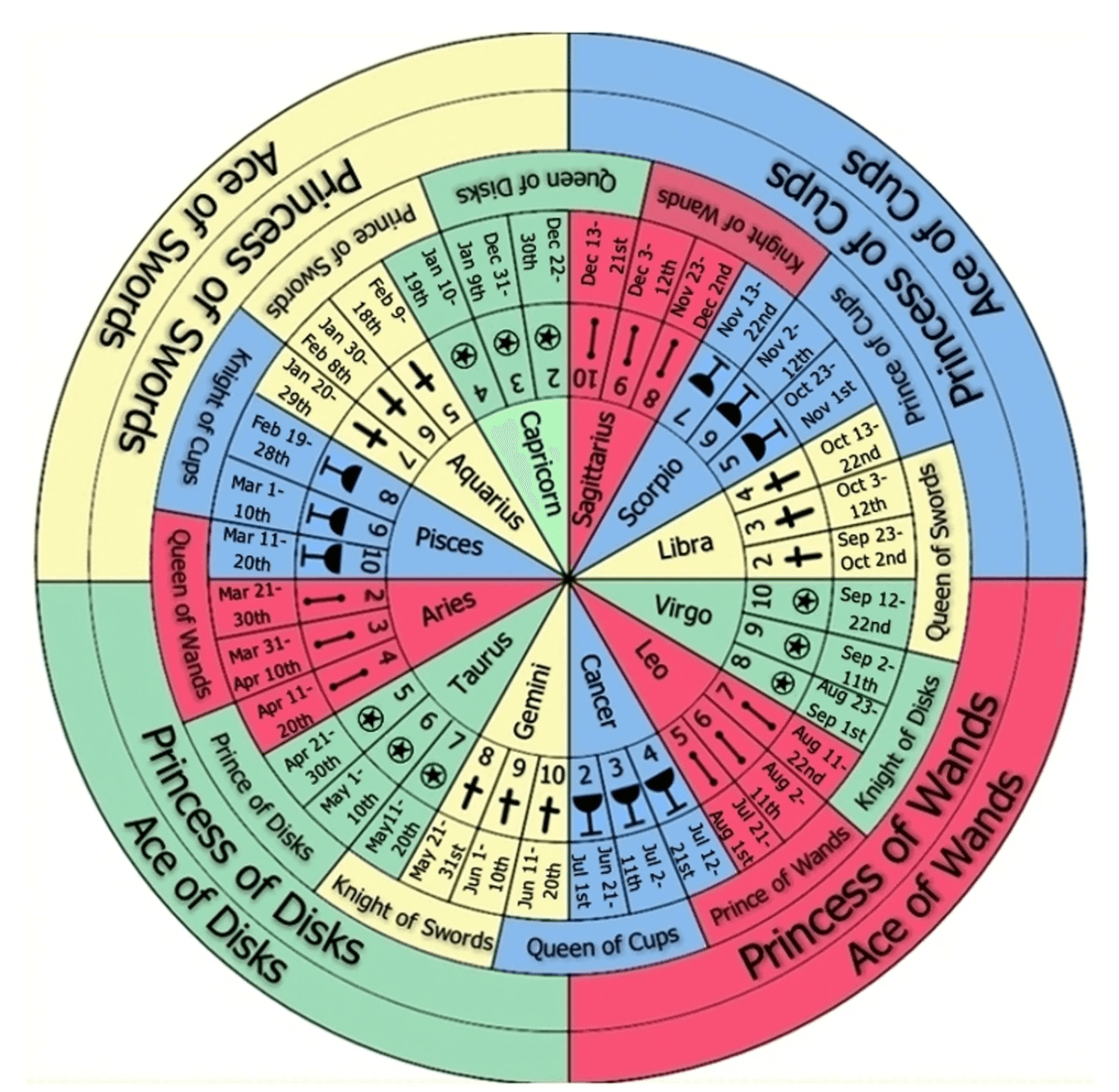
As an archetypal personality, the Knight (King) of Swords signifies a mature intellect at the zenith of its creative control and will. He embodies Air disciplined by Fire, a mind illuminated by the lightning of inspiration and directed toward the establishment of order. This is the Judge, the Strategist, the Arbiter—one who brings clarity where confusion reigns. In worldly terms, he is drawn to matters of justice, discipline, law, and structural design, both civic and personal. His is the mental force that builds civilization out of chaos.

In Hindu cosmology, this archetype corresponds beautifully to Yama, the Bull God who sacrificed his earthly form to become the Lord of Death and Justice, presiding over the moral order of the underworld. Yama is not a destroyer but a regulator—the divine principle of equilibrium that ensures all forces return to balance. Likewise, the Knight of Swords rides through the Astral World enforcing the laws of mind and measure, commanding the discipline that keeps the airy element from scattering into disarray.
Yet, as his Gemini rulership implies, there exists a duality in this being. He can become either the illuminated intellect—devoted to the pursuit of higher truth and universal order—or the dissociated rationalist, lost in abstraction and indecision. Gemini’s restlessness may drive him toward brilliance or dispersal. Therefore, the surrounding cards in a reading reveal which aspect of the Twins is active: whether the mind’s cutting light is being wielded in harmony with Will, or scattering the Self across too many directions.
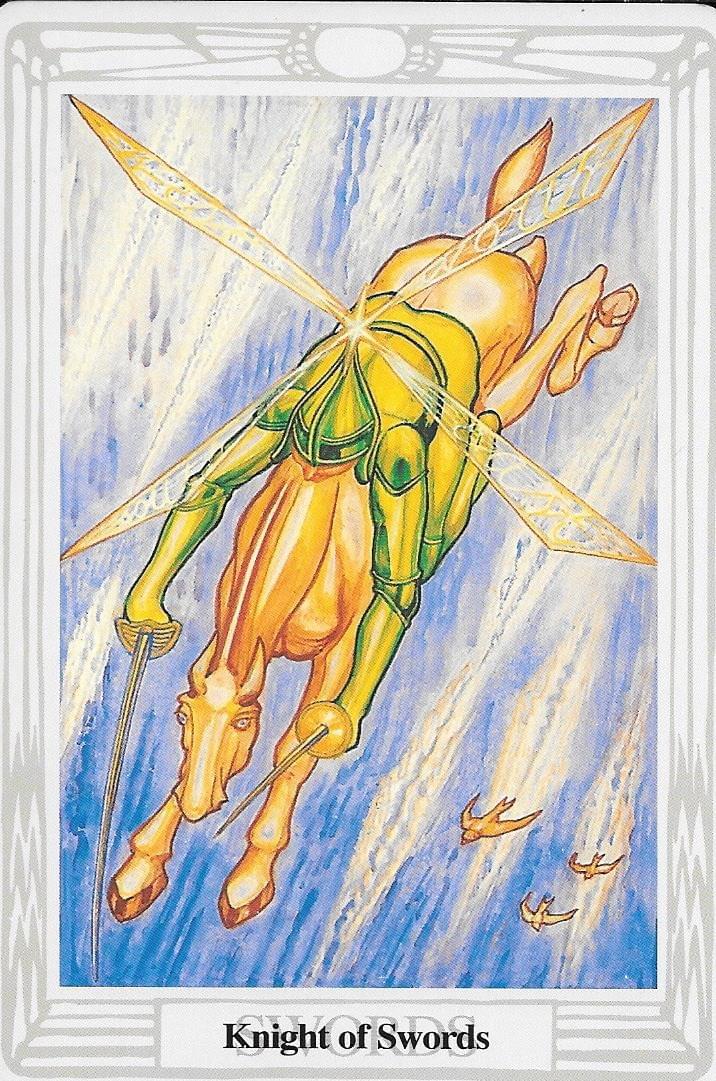
Ultimately, the Knight of Swords reminds the initiate that the intellect must serve Spirit, not the reverse. When the Will-to-Force of Chokmah flows through the airy medium of Yetzirah, the mind becomes a divine instrument of creation—swift, disciplined, and precise. But when that current loses its grounding in purpose, the sword turns inward, dividing rather than uniting. Thus, this Knight teaches that mastery of the Mind begins with mastery of Motion itself.
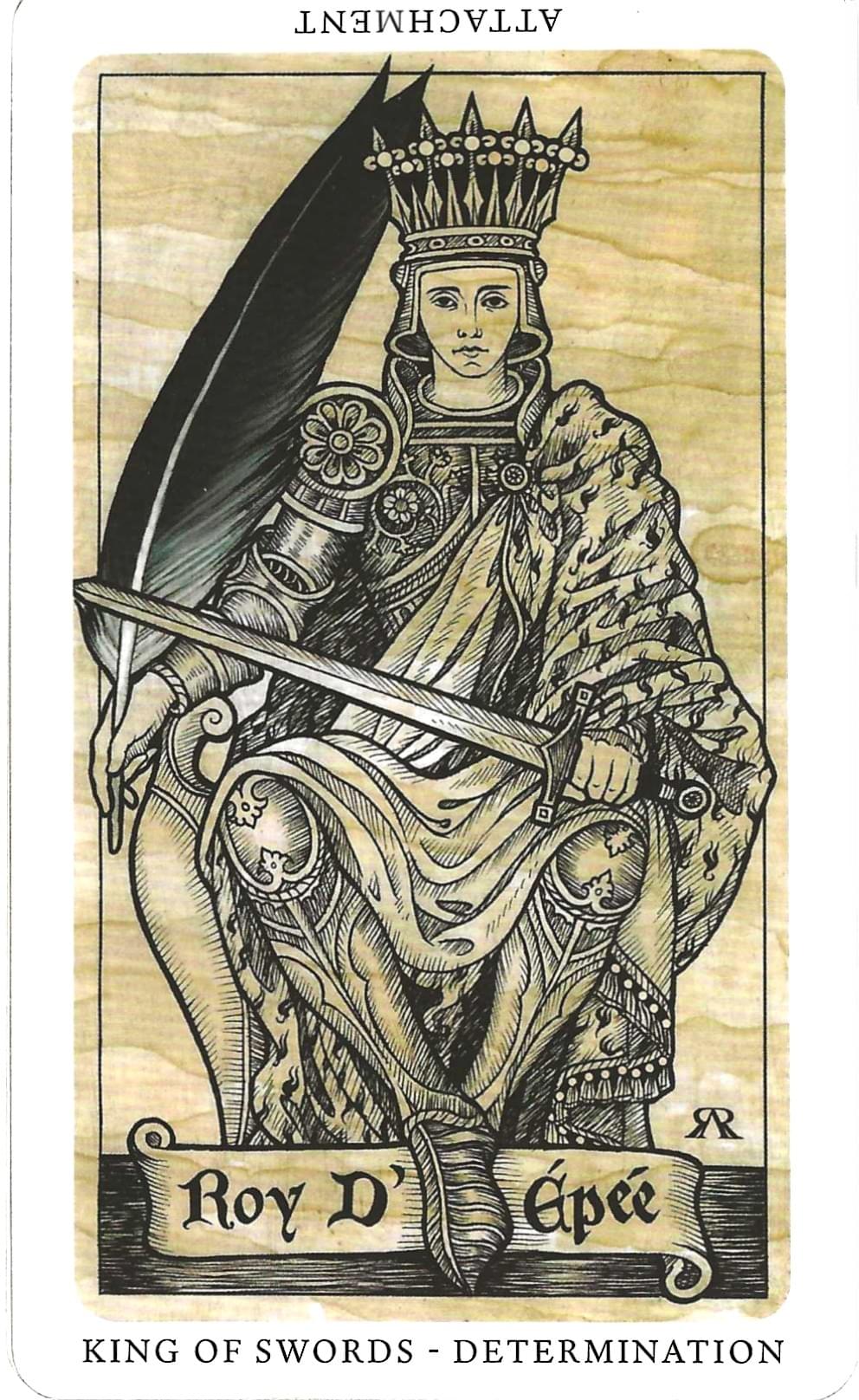
The Medieval Feathers Tarot-King of Swords-Determination
In the Medieval Feathers Tarot, the King of Swords embodies the noble intellect in motion—the mature will sharpened by experience. He is gallant yet uncompromising, a sovereign of mind who commands respect through his unwavering focus. Those who know him understand that his resolve is immovable; to oppose his purpose is to be swept aside by it. Even in his youth, when he was only preparing to inherit the mantle of rulership, he learned to trust his inner judgment above the voices of doubt around him. His decisions, once made, are acts of mental sovereignty—expressions of pure determination rather than emotional persuasion.
The Albatross feather in his hand becomes a potent symbol of this guiding principle. The Albatross, known for its ability to traverse vast distances across the sky and sea, represents the freedom of intellect sustained by endurance. It is the feather of perseverance, reminding the King never to betray his course once the higher vision has been chosen. His grip upon it signifies that true wisdom is not passive reflection but disciplined persistence.
Thus, to the querent, the King of Swords speaks of breaking free from the stagnation of the past and asserting mental authority over the unfolding present. He advises: weed out what no longer serves your higher aim. Thoughts, habits, or attachments that once had value may now drain the vital current of your destiny. The King demands clarity—he insists that you clear your psychic field so your purpose can act without interference. Through this process, you awaken your own internal monarch—the Self who rules through conscious determination.
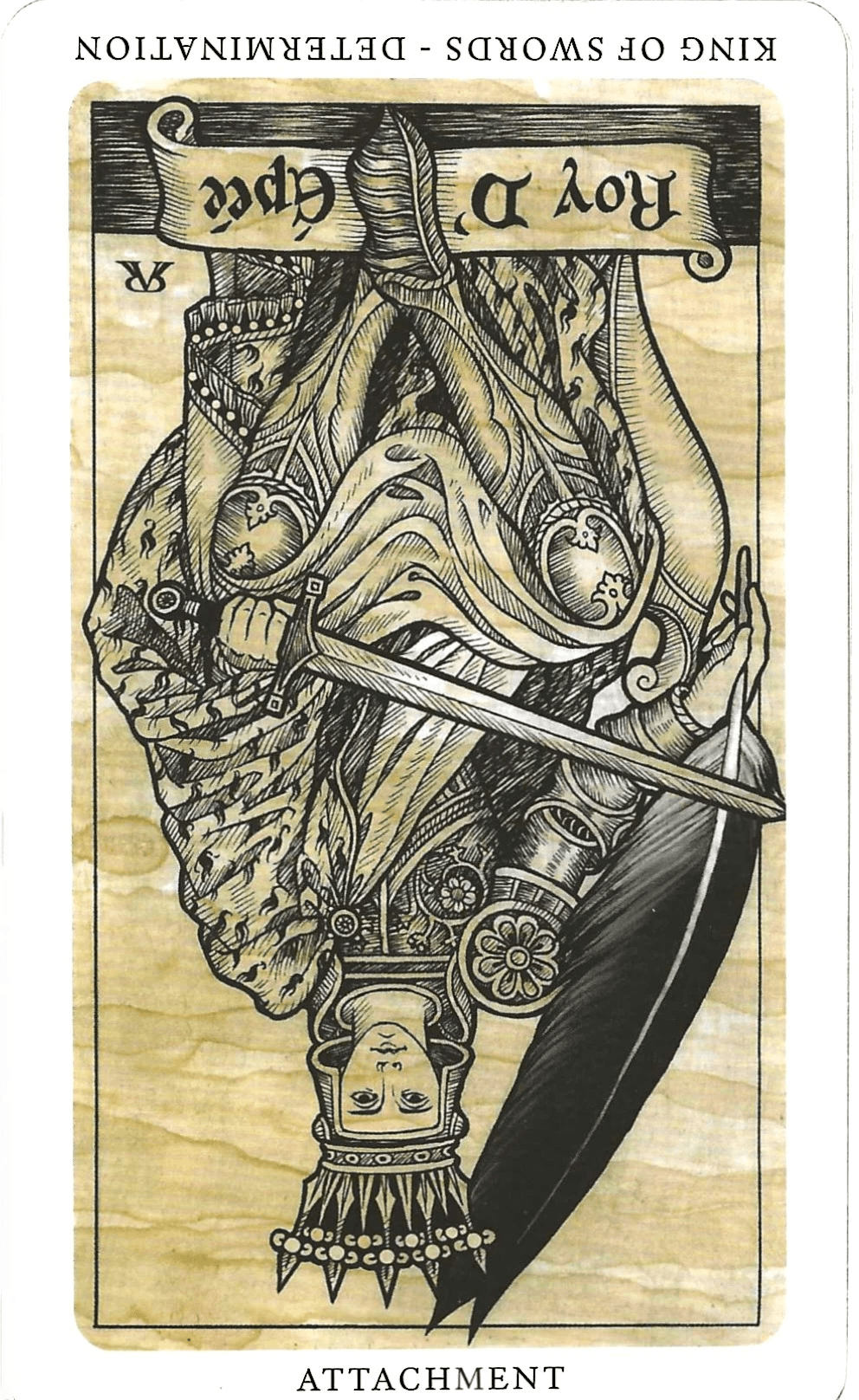
Reversed Meaning
When reversed, the King’s sword points inward. His strength becomes fixation; his clarity turns to attachment. This reversal warns that your loyalties or affections may have outlived their true purpose. You may be clinging to people, ideas, or roles that once empowered you but now restrain your evolution. The reversed King asks for the courage to release these bonds. Only through letting go can the higher intellect regain its freedom to soar, like the Albatross once again taking to the open skies.
Hermetic Parallel
In Hermetic terms, this King of Swords mirrors the Thoth Knight of Swords—both channel the Fiery Air of Yetzirah, yet where the Thoth Knight is the lightning strike of initiation, the Medieval Feathers King is its established current, the Mind made regal through endurance. He is the Lawgiver of Reason, the perfected aspect of Chokmah’s Will-to-Force once it has been disciplined by the balance of Tiphareth.
Together, these two images form a polarity of the same archetype:
The Thoth Knight rides the storm—the ignition of mental force.
The Medieval Feathers King commands the winds—the mastery of mental force.

The Archetype of Passionate Thinking and Intentionality
In the Tarot, the Knight (King) of Swords stands as the archetype of mastered intellect—the governed fire of thought and will. He is the mental artisan who has transformed the chaos of ideas into disciplined intentionality. His weapon is not emotion, but clarity; not reaction, but precision. In him, the element of Air has been inflamed with purpose—the Logos riding upon the winds of Yetzirah, the formative world of Mind.
By now, many students of the Mysteries understand that the Court Cards are not people in the mundane sense, but personality archetypes, cosmic templates of consciousness expressing themselves through human individuality. As Jana Riley describes in Tarot: Dictionary and Compendium:
“The original Archetype was a thought in the Mind of God—male and female. The Supreme Mind became enamored with this thought and created life in Its image by the friction of Its Word—or by the motion of Its sound. This caused the Universe to divide into ordered strata, and because creation is within the Mind of God, everything is a model or a copy of the original pattern, which is God.”
This Hermetic statement reveals the foundation of all Tarot: every card is a vibration within the Divine Mind, an echo of the eternal “Word” that gave rise to the ordered Universe. The Knight of Swords is that Word in motion—the fiery articulation of Air, or the divine thought projected outward as Will.
Within this framework, God is 0=2—the No-Thing which becomes Two in order to experience Itself.
These two—Anima and Animus, or Isis and Osiris—move through the cycles of manifestation seeking reunion, their synthesis forming the Third Principle, the Child, the active plane of Creation. Thus, the formula 0=2→3 is the very geometry of being, the triune structure of consciousness itself.

Crowley encoded this truth visually in the Thoth Knight of Swords. Riding through a storm of clouds, he is accompanied by three swallows, symbols sacred to Isis, the Eternal Feminine who draws the Will of Spirit into the matrix of Form. The Knight’s charge is not solitary—his motion is guided by the subtle presence of the Goddess, for all true thinking arises from the union of intellect (Animus) and intuition (Anima). The swallows, soaring beside his horse, represent the Soul’s companions—Love, Motion, and Memory—that balance his fiery mind with grace and receptivity.
In this image, the Logos and Sophia move together: the Word and the Womb, Thought and Understanding, Yod and Heh. The Knight’s intellect, though fierce and decisive, is not divorced from Love; rather, it is Love in the form of Motion—Spirit engaging Its own creation.
Hence, the Knight of Swords is the divine intellect at full gallop—the mind aflame with insight, seeking its Isis across the heavens of Yetzirah. He reminds the Initiate that pure thought, when enkindled by passion and balanced by intuition, becomes a creative act of God. The mind, when mastered, is the first magic wand.

Trinity Goddess.
Trinity Goddess.

The Knight/King of Swords can be compared to the Lightning bolt of an idea absorbing the entire life of one, in concentrated aspiration. There will be Live or Evil (live spelled backwards) here.


The King of Swords philosophy is that of Sun Tzu, the legendary author of The Art of War, from both a historical and a more esoteric (specifically Western Hermetic) vantage. We will also consider how his strategic insights resonate with the Western occult tradition’s emphasis on clarity of mind, subtle manipulation of forces, and mastery of the self.
1. Historical and Cultural Context
Sun Tzu (also spelled Sunzi) was a Chinese military strategist, philosopher, and general, traditionally believed to have lived during the Spring and Autumn Period (roughly 771–476 BCE). His treatise, The Art of War, is arguably one of the most influential works on strategy and warfare in history. While originally written for military application, it later became a philosophical treatise, finding resonance in business, politics, negotiation tactics, and personal development worldwide.
Core Premises in The Art of War
- Deception and Foreknowledge: Key to Sun Tzu’s approach is the notion that to succeed, one must master the art of misdirection—knowing how to create illusions and exploit the enemy’s weaknesses while safeguarding one’s strengths.
- Adaptability and Fluidity: Effective strategy requires flexibility. One must adapt to shifting conditions just as water flows to fill any shape.
- Economy of Force: Win without prolonged conflict whenever possible. The supreme victory is to subdue opposition without fighting.
- Know Thyself and Know Thy Enemy: Sun Tzu highlights intelligence-gathering and deep self-awareness; strategy begins with accurate knowledge.
2. Esoteric Parallels to Western Hermetic Thought
While written within a specific cultural milieu, many of Sun Tzu’s strategies align with Hermetic principles, especially regarding the subtle manipulation and alignment of forces—inner and outer.
a) Strategic Mind & The Suit of Swords
In the Western Hermetic tradition (e.g., the Thoth Tarot or the broader Golden Dawn system), the Sword suit corresponds to the element of Air—symbolizing intellect, reason, communication, and the power of discernment. Sun Tzu’s systematic approach to warfare and the use of precise knowledge can be compared to the Sword’s function of cutting through illusions.
Knight (King) of Swords
- Embodies swift, strategic thinking and an almost martial intellect.
- Charges into battle with mental clarity, much like Sun Tzu advocating that one must assess the terrain, lines of supply, and morale before moving.
b) The Hermetic Maxim: “As Within, So Without”
Sun Tzu stresses knowing yourself as much as knowing your enemy. In Hermetic terms, mastery of the outer world begins with mastery of the inner. A mind clouded by arrogance, ignorance, or impulsiveness will fail to perceive external threats accurately. This is akin to the alchemical process of refining one’s inner state (the prima materia) to reflect the order we wish to see in the world.
c) The Principle of Mentalism and Strategy
One of the Kybalion’s key Hermetic Principles states: “All is Mind.” Strategy, in that sense, is a matter of harnessing and directing mental energy. The Art of War is filled with references to the importance of shaping the battlefield in your favor through clever planning, subtlety, and understanding the psychological states of all parties involved. These guidelines echo the Hermetic notion that reality can be influenced by directed thought and alignment with the “higher laws” that govern any conflict.
3. Subtle Alchemy of Conflict and Change
Alchemical Transformation
Sun Tzu teaches that conflict—properly understood—can become an opportunity for transformation. In Western esoteric traditions, conflict (or friction) is often the catalyst for inner growth. The forging of the Great Work (or Magnum Opus) may require confrontation with obstacles. Sun Tzu’s writings remind us to face these “outer obstacles” with a disciplined approach, mirroring the Hermetic approach to our “inner obstacles.”
Illusion and Reality
Central to Hermetic ritual, magick, and Qabalah is the interplay of illusions we impose on our daily life versus the deeper reality we attempt to perceive. Sun Tzu’s concept of deception on the battlefield—showing strength where there is weakness, feigning motion when at rest—underscores the vital lesson to question appearances. This resonates with the Hermetic tradition’s emphasis on constant vigilance and the unveiling of illusions that might mislead us.
4. Modern Applications: Strategy and Magick
Mental Focus and Self-Mastery
- A magician in the Western tradition meticulously prepares the altar, the ritual space, and the state of mind to align with a certain outcome.
- Sun Tzu’s treatise encourages a general to lay the groundwork so meticulously that success becomes a matter of execution rather than hope.
Leveraging Hidden Advantages
- Hermetic practitioners often work with subtle energetic currents (planetary hours, lunar cycles, spiritual correspondences) to tip the scales.
- Sun Tzu advocates subtlety: controlling the battlefield environment, supply lines, and morale to quietly ensure victory before the direct clash even occurs.
Forward-Thinking in Strategy
- In the same way that Western mystics study astrology or the Tree of Life to foresee cosmic influences, Sun Tzu’s strategist reads omens and collects intelligence to prepare for all eventualities.
- Both paths emphasize that foresight and planning often trump brute force.
Conclusion
Sun Tzu’s The Art of War is more than just a manual on combat. It is a timeless treatise on harnessing knowledge, awareness, and strategic thinking to navigate challenges—qualities that deeply resonate with Western Hermetic philosophy. Where Hermeticism posits that all power begins in the mind (Air, the Swords), Sun Tzu offers concrete ways to wield that mental force in the manifest world.
In the end, whether we approach the text as a martial guide, a diplomatic strategy, or an esoteric metaphor, The Art of War encourages us to cultivate clarity, adaptability, and keen discernment—virtues equally prized in the Western Hermetic tradition’s quest for self-mastery and higher realization.

How ever we choose to dignify this Knight/King s/he is the "Extended Flame of mind" as Zoroaster calls it. Here the True "Will too Force", as Chokmah is exploding the Mind into 0=2. The Taurian influence makes it steadfast, and the first Decanate of Gemini makes it inspirational; thus, an idea tends to absorb the entire life of the individual in the blinding light of concentrated aspiration. Therefore, the description shows the danger to this state of mind, for the first Decan is also known as "shortened force" and that shortened force is symbolized by the poniard on the Thoth Knight.
Shortened force often comes off as defensive, cruel, and stubborn behavior.

4. Hermetic & Magickal Applications
1. Directed Will (The Lemniscate of Consciousness)
When a magician “invokes force of mind,” they align their will (Fire) with sharp intellectual focus (Air). This synergy makes manifestation of ideas more precise and rapid.
2. Cutting Through Illusion
Swords represent the power to divide truth from illusion. In the Qabalistic sense, the mind can become ensnared by astral glamour or personal bias. The Knight of Swords, in ritual or meditation, can be petitioned or visualized as the unstoppable, truth-bearing wind that disperses misleading influences.
3. Action in Service of Vision
Contrary to pure “theorizing,” this Knight demands follow-through. Crowley taught that knowledge must bloom into action—an essential Hermetic lesson. The Knight of Swords inspires immediate, dynamic implementation of one’s insights.

WHEN THE KNIGHT of SWORDS/KING IS THROWN DURING A READING:
The querent is or may be experiencing:
This Archetypal personality as a person:
- Who possesses qualities of skill, activity, subtlety, and cleverness combined with fierceness.
- S/He is both delicate and courageous while also being prey of his inspirational idea--- that he doesn't question.
- Power.
- Authority.
- Militant intelligence.
- One who knows and manipulates the Law of Action/ Reaction.
As an Archetype Mental force:
Invoked Force of Mind
Crowley’s phrase “invoked force of mind” alludes to the deliberate summoning (invocation) of mental power in a very magical or Hermetic sense. The Knight of Swords can be envisioned as:
- Focused Intention: Rather than a passive or wandering mind, it is an intellect consciously aimed, like a drawn sword, at a target.
- Rapid Decision-Making: This Knight sees connections fast, cutting through illusions and irrelevancies in a near-instant. Crowley described it as the capacity to harness mental lightning.
- Unstoppable Momentum: Once this card’s energy is unleashed, it is difficult to contain; think of a violent gust that blows away obstructions or outworn ideas.
In practical terms, when the Knight of Swords appears in a reading or meditation, it signals a time of potent mental clarity—though there is also the risk of impatience or even mental overload if not channeled wisely.
If ill dignified by the surrounding cards:
- The Card represents inadequate violence, which is useless and futile.
- The vigor in all the qualities mentioned, is gone...merely a convulsion of breezes rather than a Tempest- a-charging!
- Cruelty.
- Evil intentions.
- Perfidy.
- Perversity.
- Barbarity.
.
Thank you for your interest, comments, and supportive donations. May you live long and prosper!
🔥 Thoth Master Class
Western Hermetic Qabalah & Tarot
Private One-on-One Esoteric Training with Magus Eli
This Isn’t a Tarot Class. This Is a Soul Activation.
Step into the current of Living Light.
The Thoth Master Class is a one-on-one initiatory experience that fuses Hermetic wisdom, Qabalistic structure, and the archetypal genius of the Thoth Tarot — all personally guided by Magus Eli, master teacher and Solar Self awakener.
These aren’t generic lectures. They are ritual-grade, soul-specific transmissions designed to unlock your inner Temple, align your psychic architecture to the Tree of Life, and awaken your resonance with the living language of Tarot.
🌞 What Makes This Class a True Initiation?
🎓 Private Apprenticeship: Just you and the Magus in a deep 2-hour Google Meet session, entirely focused on your development.
🔄 Flexible Rhythm: Weekly, biweekly, or monthly — you set the pace. (12 sessions recommended for full arc of mastery.)
📹 Recorded Sessions: Each class is recorded so you can revisit the teachings and track your spiritual evolution.
🌿 Living Hermeticism: You won’t just learn about Qabalah — you’ll live it, feel it, and integrate it into your energetic field.
🃏 Practice Meets Power: You’ll lay spreads, decode symbols, and channel Tarot through your own voice, with real-time feedback and co-interpretation.
🜂 What You'll Learn (and Embody):
The entire architecture of the Thoth Tarot: Major Arcana, Minor Arcana, and Court Cards through a Hermetic lens
The Western Hermetic Qabalah: 10 Sephiroth, 22 Paths, and the Four Qabalistic Worlds
How to use Tarot as a portal to meditative pathworking and astral temple building
Rituals, spreads, and practices that bring gnosis, guidance, and transformation
How to build your personal mystical system, rooted in self-authority and Divine resonance
📚 What You’ll Need to Begin:
The Qabalistic Tarot: A Textbook of Mystical Philosophy by Robert Wang
A Thoth Tarot deck (Crowley-Harris edition preferred)
A Book of Shadows or personal journal
A desire to know thyself through the Solar Flame
🌟 Is This Class for You?
Yes — if you are:
A beginner with a soul-call to the Thoth deck, but no formal training
An experienced reader seeking depth, ritual, and Hermetic context
A mystic ready to reclaim your path through archetype, symbol, and gnosis
Anyone craving one-on-one spiritual mentorship in the Western Esoteric Tradition
💠 Investment in the Self — Not in Gold
At The Tarot of Eli, money is never the gatekeeper of gnosis.
These teachings are offered on a sliding scale, because every soul ready to walk the Path deserves a guide. You are not buying a class — you are answering the call of your Soul.
If you feel the fire of this journey within, reach out. Let’s find a way that works for your means. No sincere aspirant will be turned away for lack of coin.
🕊️ The true currency of this Master Class is your will to become who you truly are.
📬 How to Begin Your Journey
Email eli@elitarotstrickingly.com
to request your resonance mapping session, check availability, and discuss the exchange that fits your path.
3 Western Hermetic Tarot and Magick Websites helping people become more magic and less tragic since 2010.
Home page, Tarot Store, Master Thoth Tarot Classes, and nontraditional Tarot Card Comparisons blog.
Traditional Tarot Card Comparisons blog and tarot readings store.
Western Hermetic Magick ritual and invocation website and Magick blog.
